
The small tortoiseshell is a colourful Eurasian butterfly in the family Nymphalidae. Adults feed on nectar and may hibernate over winter; in warmer climates they may have two broods in a season. While the dorsal surface of the wings is vividly marked, the ventral surface is drab, providing camouflage. Eggs are laid on the common nettle, on which the larvae feed.
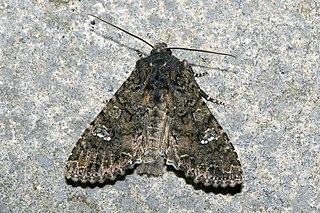
The cabbage moth is primarily known as a pest that is responsible for severe crop damage of a wide variety of plant species. The common name, cabbage moth, is a misnomer as the species feeds on many fruits, vegetables, and crops in the genus Brassica. Other notable host plants include tobacco, sunflower, and tomato, making this pest species particularly economically damaging.

Elymnias hypermnestra, the common palmfly, is a species of satyrine butterfly found in South and Southeast Asia.

Graphium agamemnon, the tailed jay, is a predominantly green and black tropical butterfly that belongs to the swallowtail family. The butterfly is also called the green-spotted triangle, tailed green jay, or green triangle. It is a common, non-threatened species native to Nepal, India, Sri Lanka through Southeast Asia and Australia. Several geographic races are recognized. The species was first described by Carl Linnaeus in his 1758 10th edition of Systema Naturae.

Colotis amata, the small salmon Arab, is a small butterfly of the family Pieridae, that is, the yellows and whites. It is found in Africa and Asia. Adults are fond of smaller flowers for nectar and often fly low along the ground in search of wildflowers.
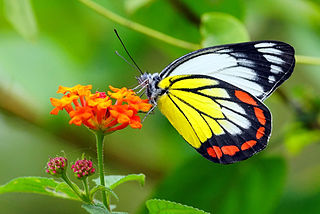
Delias hyparete, the painted Jezebel, is a medium-sized butterfly of the family Pieridae, found in South Asia and Southeast Asia.

Junonia hierta, the yellow pansy, is a species of nymphalid butterfly found in the Palaeotropics. It is usually seen in open scrub and grassland habitats.

Ideopsis vulgaris, the blue glassy tiger, is a butterfly that belongs to the crows and tigers, that is, the danaid group of the brush-footed butterflies family.

Tanaecia lepidea, the grey count, is a species of nymphalid butterfly found in South and Southeast Asia.

Euthalia lubentina, the gaudy baron, is a species of nymphalid butterfly found in South, Cambodia, and Southeast Asia. It was first described by Pieter Cramer in 1777.
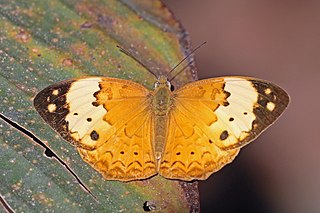
Cupha erymanthis, the rustic, is a species of brush-footed butterfly found in forested areas of tropical South Asia and Southeast Asia. The males and females are identical.

Doleschallia bisaltide, the autumn leaf, is a nymphalid butterfly found in South Asia, Southeast Asia, and Australasia. In Australia it is also known as the leafwing.

Ionolyce helicon, the pointed lineblue, or bronze lineblue, is a small butterfly found in the Indomalayan realm that belongs to the lycaenids or blues family.
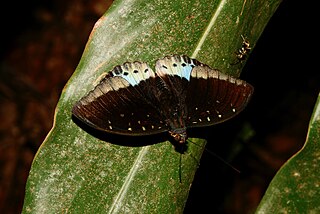
Lexias pardalis, the common archduke, is a butterfly of the family Nymphalidae.

Lexias dirtea, the archduke, is a species of butterfly of the family Nymphalidae.
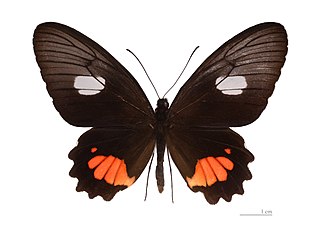
Parides anchises, the Anchises cattleheart, is a species of butterfly in the family Papilionidae native to the Americas. It is common and not threatened. The larvae feed on Aristolochia species including: A. brazilsis, A. bukuti, A. colombiana, A. cymbifera, A. fimbriata, A. inflata, A. macroura, A. odora, A. ringens, and A. triangularis.

Lexias aeropa, the orange-banded plane, is a butterfly in the family Nymphalidae. It is found in South-East Asia and Australia.
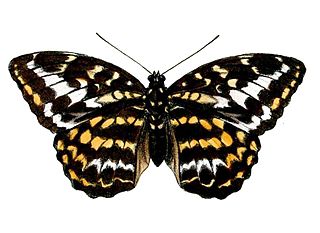
Lexias canescens, the yellow archduke, is a species of butterfly belonging to the family Nymphalidae. It was first described by Arthur Gardiner Butler in 1869.

Lexias cyanipardus, the great archduke, is a species of butterfly belonging to the family Nymphalidae. It was first described by Arthur Gardiner Butler in 1869. It is found in the Indomalayan realm.







































